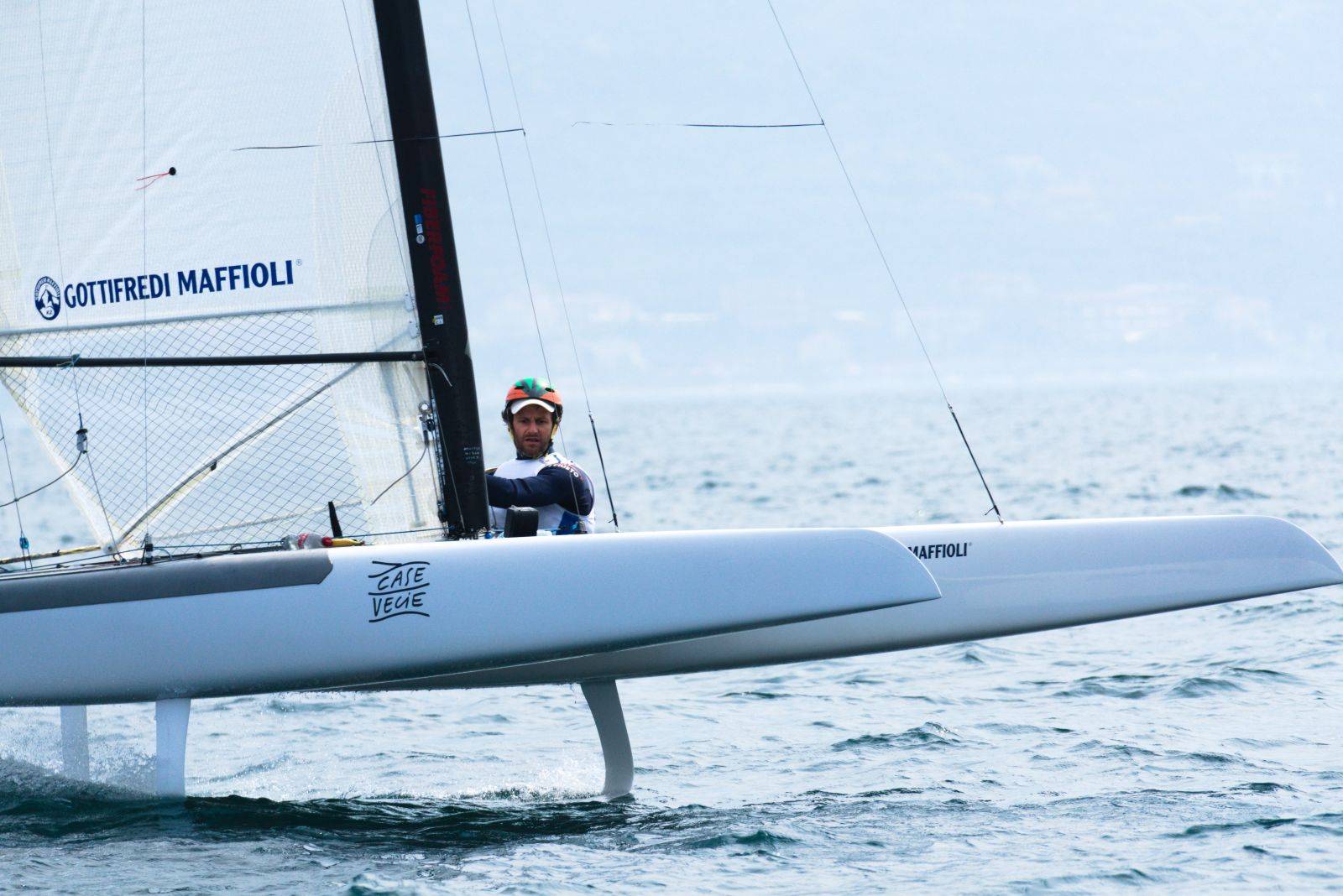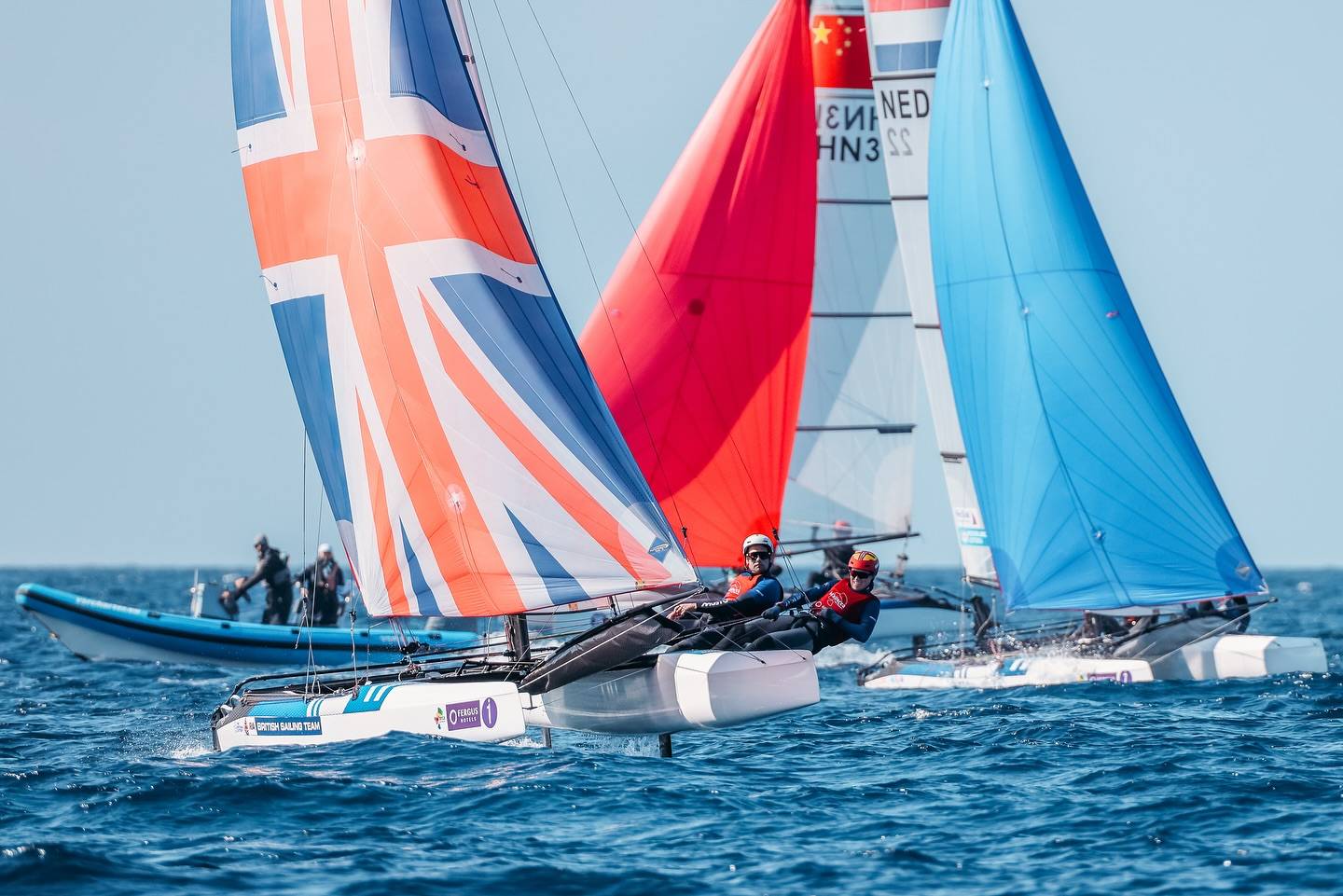Arkea Ultim Challenge 2024: Le Cléac’h peaks at 47kts









–
We didn’t followed this one due to lack of time, so below some background of the race and current positions. Le Cleac’h past reaching 47knots enduring 45knots of wind down here at our Patagonian coast.
Current positions Participants / Skippers:
1- Maxi Edmond de Rothschild / Charles Caudrelier
2- Maxi banque Populire XI / Armel Le Cleach
3- Sodebo Ultim 3 / Thomas Coville
4 – ACTUAL Ultim 3 / Anthony Marchand
5 -ADAGIO / Eric Peron
Retired – SVR-Lzartigue / Tom Laperche
Tracking and official web here: www.arkeaultimchallengebrest.com/en
Latest report by Arkea Ultim Challenge:
Feb 12, 2024
Coville round Cape Horn, Le Cléac’h peaks at 47kts!

Photo: Benoît Stichelbaut / BPCE
Very early Monday morning, at 00:40hrs UTC, Thomas Coville, skipper of Sodebo Ultim 3 passed Cape Horn in third place on the ARKÉA ULTIM CHALLENGE-Brest. Coville crossed almost five days after race leader Charles Caudrelier and less than 24 hours after second placed Armel Le Cléac’h. His elapsed time to the Cape since the start is 35 days, 12 hours and 10 minutes of racing. All three top skippers are now racing in in the Atlantic.
“I think Cape Horn one of the most fascinating places for a sailor”. Said Coville yesterday, a few hours before rounding Cape Horn. He spoke of a huge level of relief and described Ferdinand Magellan as “the greatest sailor of all time”.
“There were too many clouds for me to see the snow-capped mountains,” Coville said this morning. “But it’s a pretty fantastic place, it marks something very strong. It’s the tipping point.”
The skipper of Sodebo Ultim 3 had to manoeuvre a lot in order to get quite close to the rocks,” reported Guillaume Evrard from Race Direction. “ He was forecast to have 25 to 30 knots with 3.5 meters of swell and that will build during the day with a second very substantial depression which will catch up with him this evening.”
Le Cléac’h and Caudrelier, each dealing with their own realities.
More than 200 miles further north, second placed Armel Le Cléac’h is closing the Argentinian coast. Looking to avoid this same depression as threatens Coville, he chose to sail along Tierra del Fuego. “Even though he had a lot of winds (up to 45 knots, top speeds of more than 40 knots), that route allowed him to have conditions that were a little less strong and a little more manageable,” explains Evrard. “In the last few hours, he had 42 knots of wind and was ‘speed gunned’ at 47 knots!
Leader Charles Caudrelier is making progress not far from the Brazilian coast. “He’s continuing his upwind climb and looking for the strongest vein of wind. As soon as it gets light he tacks to take advantage of the coastal effects. He will continue upwind until this evening when he will start a tack, the end of the manoeuvres for a long climb up the coast of Brazil towards the north before heading a bit more east.”
Marchand adapts, Péron progresses
Anthony Marchand continues to make progress in the Pacific Ocean. The skipper of Actual Ultim 3 is at the back of a small depression. “He’s making an average of 25 knots with 25 knots of wind, which shows that the boat is far from being at 100% of its capacity,” says Evrard. “He is in southwesterly winds and is expected to remain in this flow until Wednesday.”
And Éric Péron runs along the AEZ and has passed the longitude of Tasmania.
“He will benefit from winds that will strengthen from the northwest and a depression will accompany it to the middle of the Pacific. The skipper of ULTIM ADAGIO could enjoy some nice straight line speed which he ca maintain without maneuvers until next Thursday.”
Arkean Ultim Challenge Course by Arkea Ultim Challenge
There will be six “Giants of the Seas” to set off from Brest, with a solitary skipper on board, who will attempt to complete a circumnavigation of the world from West to East, via the 3 capes (Good Hope, Leeuwin and Horn). . A human and technological challenge carried by the sailors of the Ultim 32/23 Class accompanied by their shipowners and partners.
Some of them have already completed the journey in a multihull and single-handed: Francis Joyon, Dame Ellen MacArthur, Thomas Coville, François Gabart; notably as part of solo round the world record sailing campaigns, but no one has ever done it in a race!
Alone, on their giant multihulls, for 40 to 50 days, the skippers will be subjected to extreme variations in weather conditions and will have to deal with wind, waves, swell and ice. Anticyclonic systems, with little wind, as well as depressions, most often causing strong winds, will punctuate the life of sailors on board and influence the trajectory strategies adopted.
Sailing around the world is above all a climatic journey: the descent of the Atlantic, the crossing of the Indian Ocean and then the Pacific until heading north again up the Atlantic…
First between Brest and the Cape of Good Hope, the route is punctuated by the passage from one hemisphere to the other through the “Doldrums” also called “intertropical convergence zone (ITCZ)”. The atmosphere in this area mixes warm and humid air masses carried by the trade winds of the Azores anticyclones in the North Atlantic, and that of Saint Helena in its southern equivalent. They generate unstable air where white calms and stormy squalls alternate without any real logic, already requiring increased vigilance during this first part of the race to escape this trap as quickly as possible.
Then comes the longest and most difficult part, which consists of taking advantage of the weather phenomena coming from the west to slide between Good Hope and Cape Horn via Cape Leeuwin. This crossing of the two oceans of the southern hemisphere: the Indian and the Pacific, makes up 3/5ths of the solo world tour. It requires sailors to maintain their trajectory on a downwind course while dealing with sequences of disturbances driven by powerful northwest winds, the passage of squall fronts and icy wind shifts, and this without however being absorbed by anticyclonic conditions… A demanding heterogeneity for navigators as well as for machines…
Finally, the passage of the legendary Cape Horn marks the return to Brest, with around 8,000 miles to go to reach the port of arrival. Before that, the competitors will once again have to deal with the Saint Helena anticyclone, the stormy depressions of Brazil, the stuckness of the Doldrums, the trade winds of the northern hemisphere, and potential Atlantic depressions requiring concentration. extreme of the sailors until crossing the long-awaited finish line in the harbor of Brest.
—–

























I just heard that my great sailing friend and former CEO of Hobiecat Europe has passed. May The endless oceans…
...Report was sent by an F18 Sailor, if you want Hobies reported send your own, we'll publish as usual. Cheers.
Looks like in your report the Hobies are not really present. Suggest to rewrite the article.
Thanks for the great report Wik. Great battle.
If I correctly read the results the overall winner this year is a Hobie16